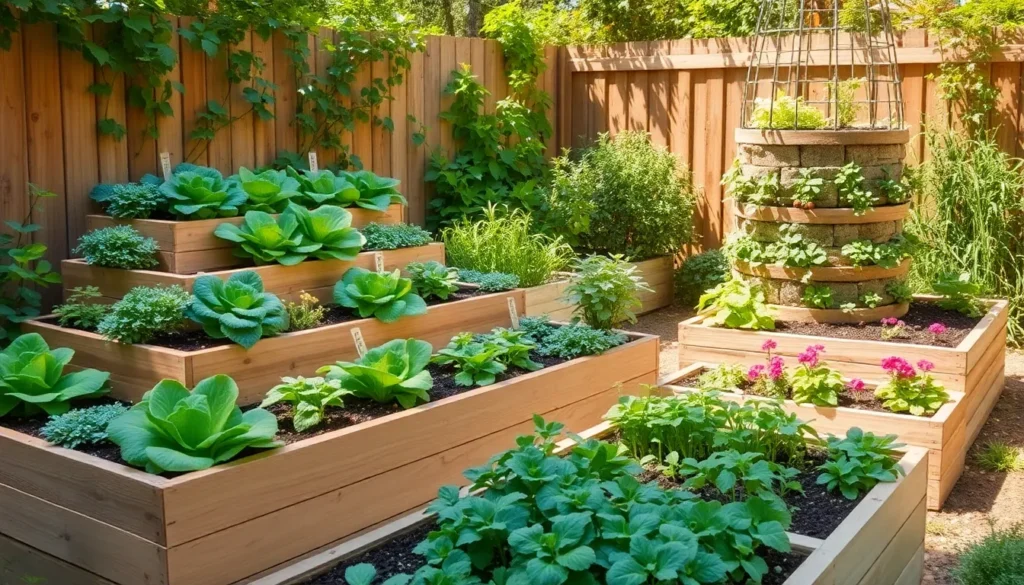Gardening is a journey where creativity meets nature, and few projects embody this better than raised bed gardens. Whether you’re dipping your toes into the soil for the first time or you’re a seasoned green thumb, raised bed gardening offers a canvas for innovation that can transform your outdoor space. These gardens not only maximize space and improve soil conditions but also make it easier to manage your plants and keep them healthy, making them an ideal choice for both small urban backyards and expansive rural plots.
In this article, we’ll explore eight delightful raised bed garden designs that cater to various tastes and needs. From whimsical shapes to practical layouts, these designs promise to inspire and challenge your gardening skills, offering something new regardless of your experience level. You’ll discover ways to personalize your garden, enhance its functionality, and perhaps even grow something you never thought possible. Join us as we delve into these inventive ideas, ensuring your gardening experience remains as rewarding as it is joyful.
Choosing Creative Layout Shapes
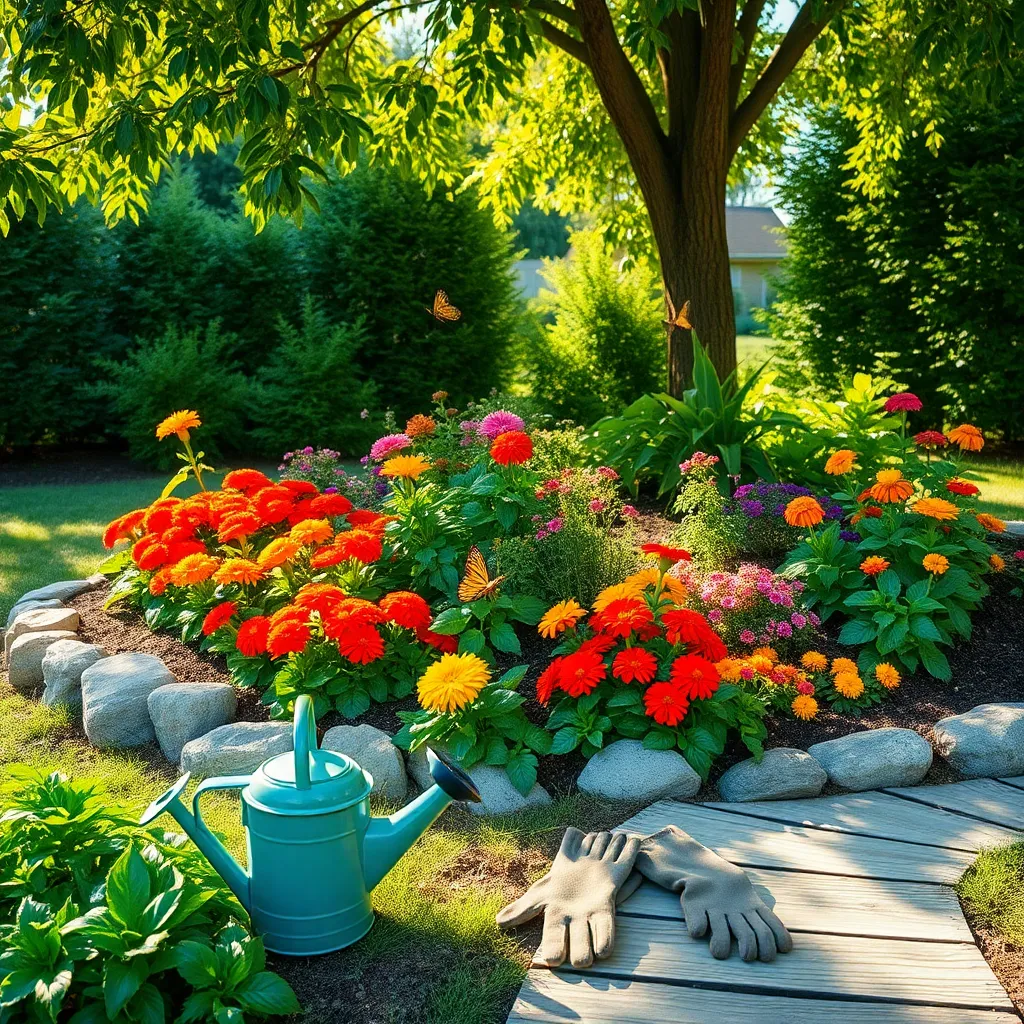
When designing a raised bed garden, thinking creatively about layout shapes can maximize both space and aesthetic appeal. Consider using geometric shapes like circles, triangles, or hexagons to create a visually engaging garden that stands out.
For beginners, starting with a simple square or rectangular layout can make plant spacing and organization easier. However, don’t shy away from experimenting with more complex shapes as you gain confidence and experience.
Incorporating paths within and around your raised beds helps with maintenance and accessibility. Use stepping stones or gravel paths to prevent soil compaction and allow ease of movement when tending to plants.
To optimize sunlight exposure, position your raised beds so that they receive at least six hours of direct sunlight daily, which is crucial for most vegetable crops. Advanced gardeners might consider tiered or multi-level designs that can help with drainage and visual interest.
Soil quality is fundamental; fill your creative-shaped beds with a mix of topsoil, compost, and peat moss for a nutrient-rich environment. Ensure your soil is well-draining to prevent waterlogging, especially in uniquely shaped beds where water might pool.
Watering needs vary based on plant type and weather conditions, but a general rule is to water deeply once or twice a week. Drip irrigation systems can be particularly effective in irregularly shaped beds, providing consistent moisture without over-watering.
Incorporating Vertical Garden Elements

Vertical garden elements can transform your raised bed garden by maximizing space and adding visual interest. One simple way to incorporate vertical elements is by using trellises or arbors, which are perfect for plants like tomatoes, peas, and cucumbers that naturally climb.
Consider using vertical planters or wall-mounted pockets for herbs and smaller plants. These not only save space but also make harvesting easier and more convenient, especially in tight urban gardens.
When choosing plants for vertical growth, ensure they have similar sunlight and watering needs to avoid maintenance headaches. For instance, growing pole beans with morning glories can create a beautiful, productive display that thrives with regular watering and full sun exposure.
To further enhance your vertical garden, explore creative supports like old ladders or repurposed pallets. These can be painted to add a personal touch and should be securely anchored to avoid tipping over during strong winds.
Mixing Edibles with Ornamentals
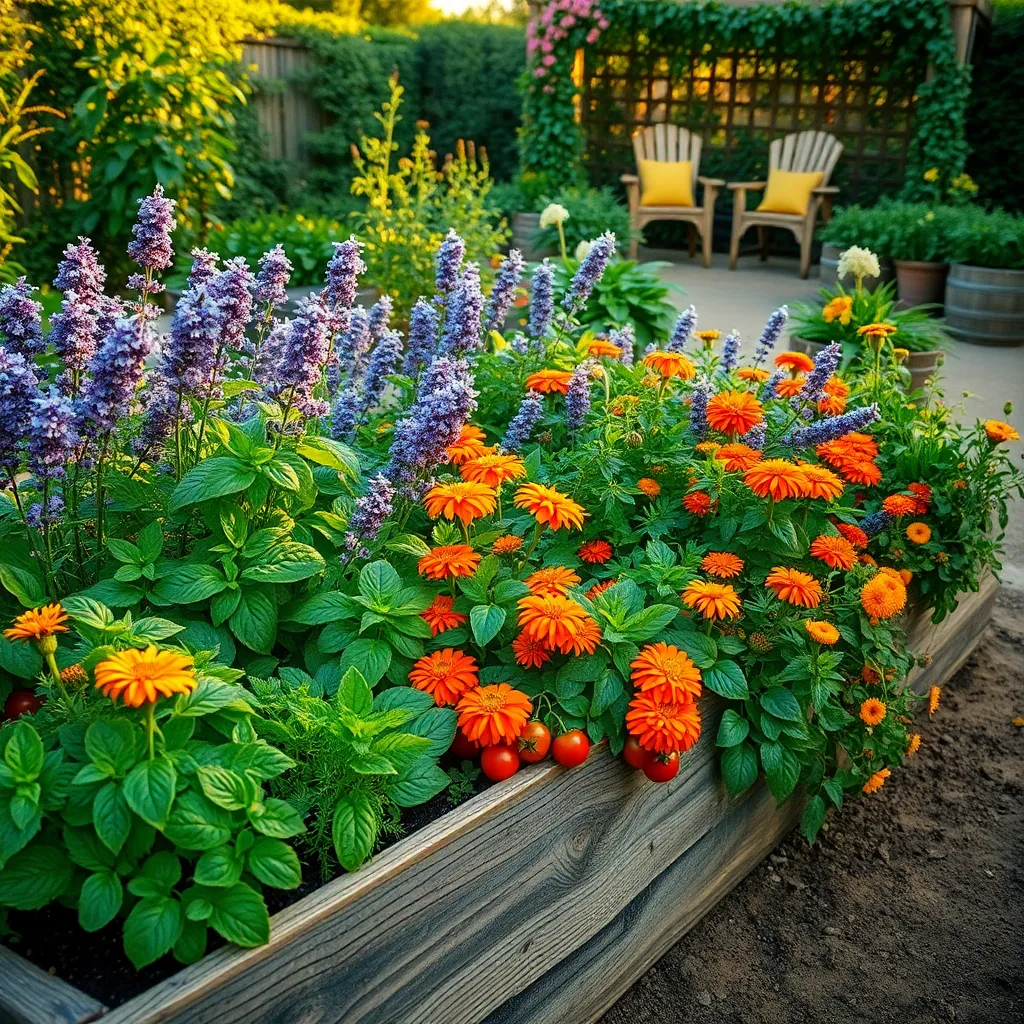
Combining edible plants with ornamentals in a raised bed can create a visually stunning and productive garden space. Start by choosing compatible plants that have similar soil and sunlight requirements to ensure they thrive together.
Edibles like kale, chard, and lettuce can be interplanted with ornamental flowers such as marigolds or nasturtiums, which not only add color but also help deter pests. Make sure to position taller plants at the back or center of the bed to avoid shading out smaller species.
Consider using herbs like basil and parsley as attractive border plants in your raised bed. These herbs not only enhance the garden’s aroma but also provide quick access to fresh flavors for the kitchen.
For a more advanced touch, try pairing tomatoes with nasturtiums, which act as a living mulch and attract beneficial insects. Ensure that your raised bed has well-draining soil and is watered consistently, especially during hot weather, to support both edibles and ornamentals.
Utilizing Recycled Materials Creatively
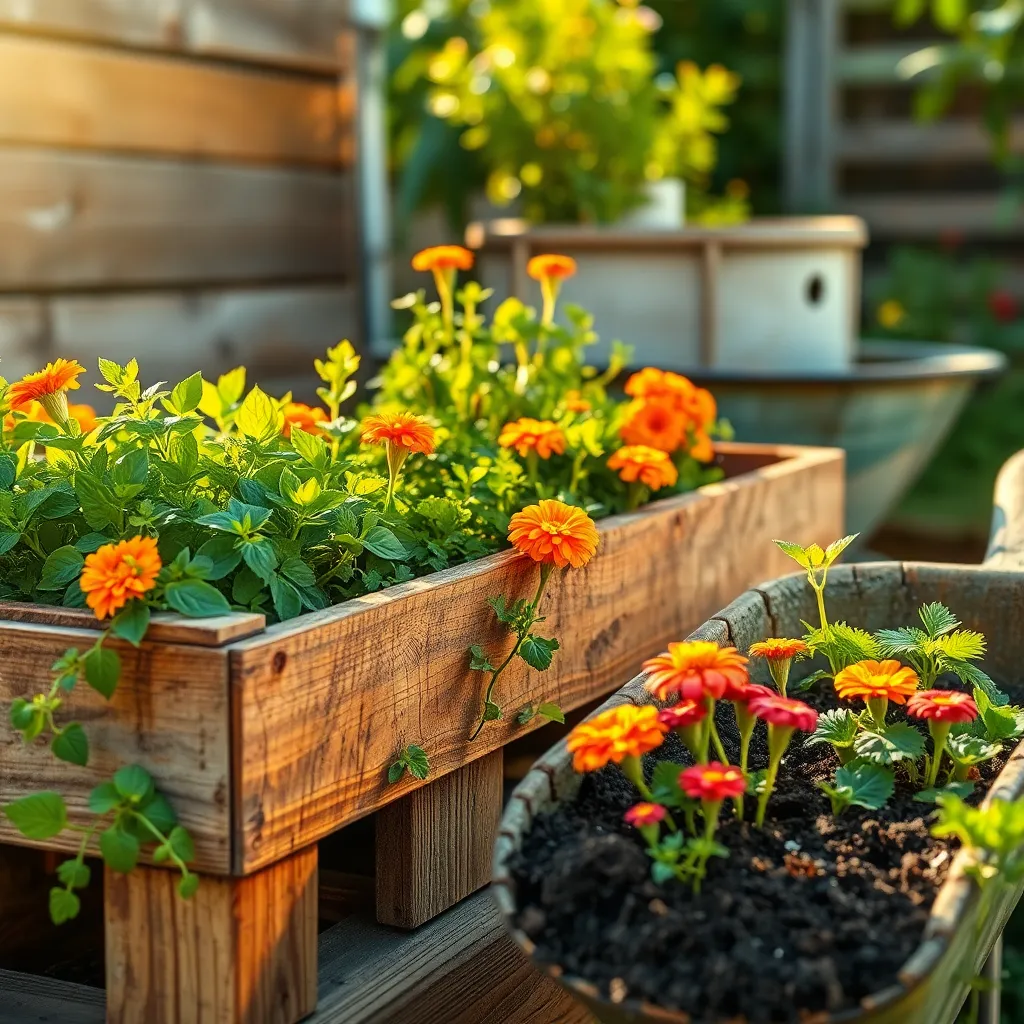
Reimagining everyday items as gardening tools is a great way to add charm and sustainability to your raised bed garden. Old wooden pallets, for example, can be disassembled and repurposed into durable and rustic garden borders that provide a natural aesthetic while supporting the growth of your plants.
Consider using discarded tires as unique raised beds that offer excellent insulation for tender plants. These tires can be painted in vibrant colors to enhance your garden’s visual appeal, while their shape allows for easy stacking and layering, perfect for creating tiered garden designs.
Glass bottles can be transformed into garden edging, bringing a bit of sparkle to your layout as they reflect sunlight. By partially burying them neck-down around the perimeter of your raised beds, you not only recycle but also define your garden spaces with a distinctive and artistic touch.
For gardeners aiming to reduce waste, using old bricks or cinder blocks to construct raised beds is both economical and effective. These materials are not only sturdy and weather-resistant but also provide excellent drainage for your plants, essential for preventing root rot and promoting healthy growth.
Designing for Easy Accessibility
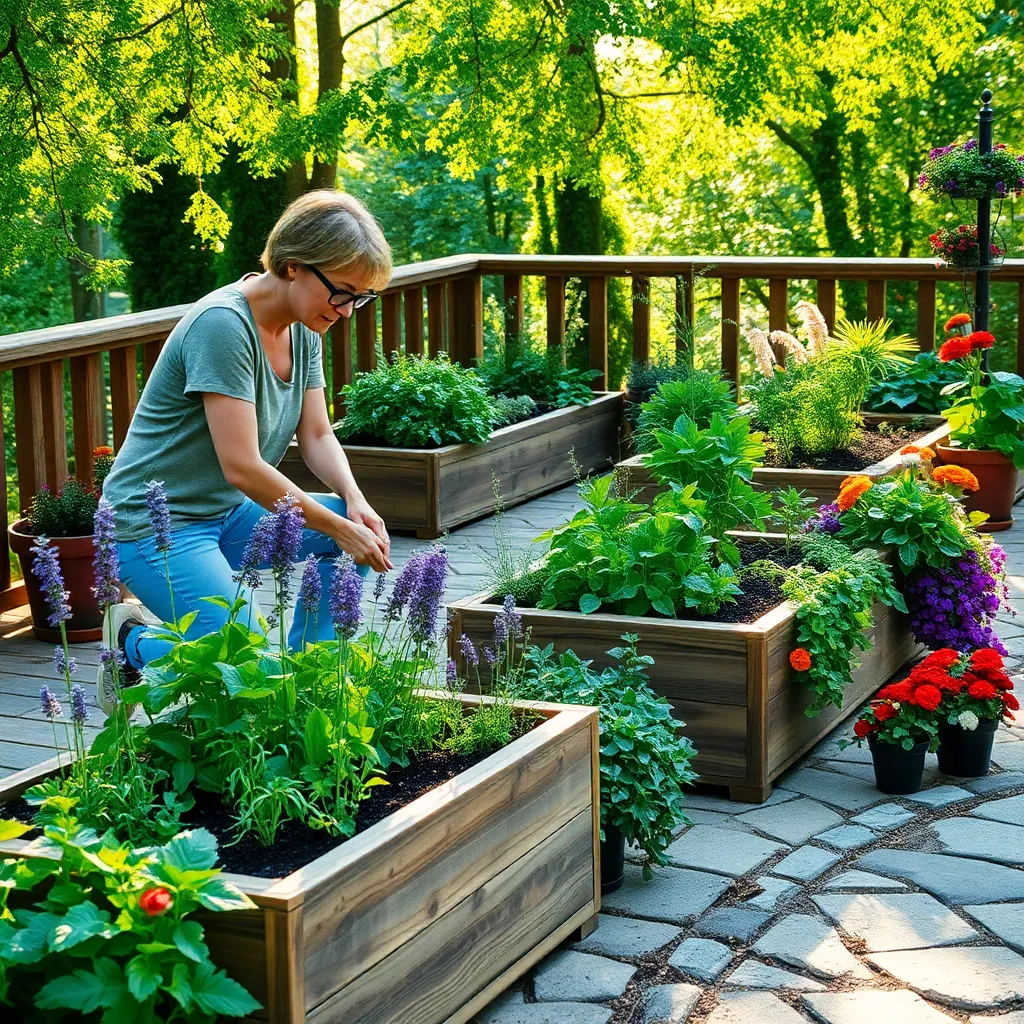
In designing raised bed gardens for easy accessibility, consider the placement and height of your beds to accommodate comfortable gardening. Raised beds should ideally be between 24 to 36 inches high to minimize bending and straining, making it easier for people with limited mobility to enjoy gardening.
Paths between raised beds should be at least 18 inches wide to allow easy movement and access to all areas of your garden. Using wheelchair-accessible paths made of compacted gravel or smooth pavers can further enhance accessibility, ensuring everyone can reach their plants with ease.
Plant selection is also crucial for accessible gardening; opt for low-maintenance varieties that thrive in your local climate. This might include drought-resistant species or plants that require minimal pruning, reducing the need for frequent, labor-intensive care. Herbs like rosemary, thyme, and sage are excellent choices for their resilience and easy upkeep.
Watering systems can be optimized by installing a drip irrigation setup that delivers water directly to the plant roots. This not only conserves water but also reduces the need for manual watering, which can be challenging for those with limited mobility. Automatic timers can be added to ensure regular watering, taking another task off your to-do list.
Integrating Companion Planting Strategies

Companion planting is a strategic approach that enhances growth by pairing compatible plants. For example, planting basil near tomatoes not only improves flavor but also repels pests like aphids. This technique is beneficial for raised bed gardens, where space is limited and maximizing productivity is key. To get started, consider the specific needs of the plants, such as sunlight, water, and soil preferences, ensuring they align well together.
Incorporating plants that support each other can lead to healthier and more productive gardens. Marigolds, for instance, are excellent companions for many vegetables as they deter nematodes and other pests. By combining plants with different root depths, you can optimize nutrient absorption and reduce competition. This harmonious balance promotes a thriving ecosystem within your raised bed garden.
For beginners, start with easy combinations like carrots and onions, which naturally repel each other’s pests. Advanced gardeners might experiment with the three sisters method—corn, beans, and squash—where each plant plays a role in supporting the others. Adjust watering schedules based on the most water-needing plant in the group to ensure all companions thrive. Regular monitoring and adjustments will help maintain balance and health in your raised bed.
Adequate planning includes selecting plants with complementary growth habits. Tall plants can provide shade for sun-sensitive crops, while low-growing herbs can act as living mulch to retain soil moisture. Keep the soil rich in organic matter, such as compost, to support the nutrient needs of all your plants. This strategy not only maximizes yield but also reduces the need for artificial fertilizers and pesticides, leading to a more sustainable garden.
Adding Artistic Touches with Color
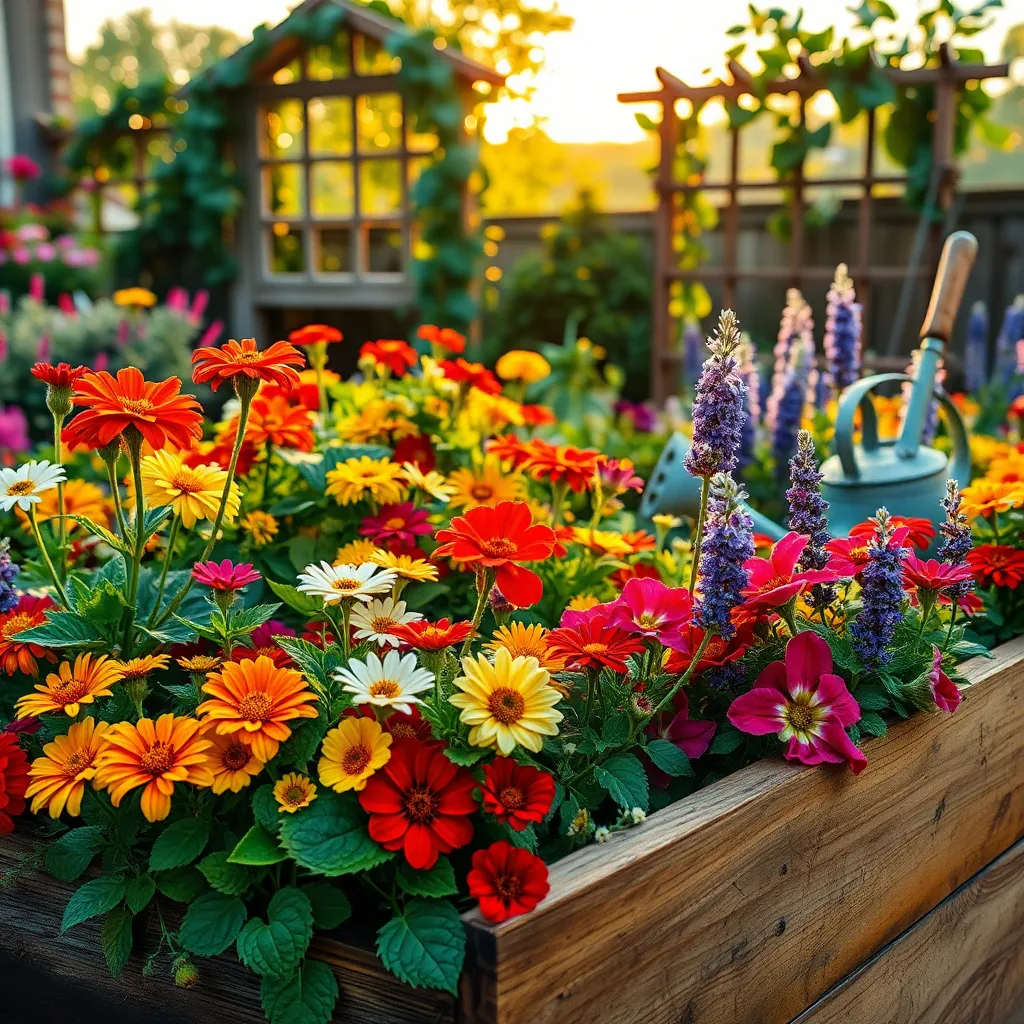
To transform your raised bed garden into a vibrant work of art, begin by selecting plants known for their colorful blooms and foliage. Consider incorporating a variety of textures and heights to create visual interest, choosing plants like marigolds, zinnias, and coleus for their vivid hues.
When planning your garden, aim for a color scheme that complements the surrounding landscape or your home’s exterior. Grouping plants with similar color tones can enhance the garden’s aesthetic appeal, while contrasting colors create dynamic focal points.
Soil quality plays a crucial role in the vibrancy of your plants. Use well-draining, rich soil with organic matter such as compost to ensure your colorful plants thrive, and water them deeply but infrequently to encourage strong root development.
Advanced gardeners can experiment with more intricate designs by layering colors and textures. For an added artistic touch, consider using colored mulch or decorative stones to accentuate the plant colors and define pathways within your raised bed garden.
Maximizing Space with Tiered Beds

Tiered beds are a fantastic way to maximize vertical space in your garden, allowing you to grow more plants in a limited area. By stacking layers, you can easily separate different crops, making it simpler to manage growing conditions for each type of plant.
Creating a tiered bed involves building a series of ascending levels, often using wood, stone, or metal. For beginners, starting with a simple three-tier structure can be a manageable project, offering ample space for diverse planting.
Choose soil wisely for each tier based on the plants’ needs; use a rich, well-draining mix for herbs and flowering plants in the top tier. Incorporate compost or organic fertilizers to enhance soil fertility, ensuring healthy growth and bountiful harvests.
Watering requirements vary between tiers, so consider installing a drip irrigation system to provide consistent moisture to each level without oversaturating lower tiers. For experienced gardeners, incorporating a rainwater collection system can add efficiency and sustainability to your tiered garden setup.
Conclusion: Growing Success with These Plants
In exploring the vibrant world of ‘8 Fun Raised Bed Garden Designs,’ we uncovered eight key relationship concepts that mirror the art of gardening. Just as diverse layouts enhance a garden’s beauty, diversity in relationships brings richness and depth. Planning and preparation ensure a strong foundation, while nurturing and adaptability allow love to flourish despite challenges. Creativity and collaboration cultivate shared joy, and the importance of boundaries maintains harmony. We learned that patience allows growth, and cherishing memories, like a perennial bloom, strengthens bonds over time.
Now, take a moment to reflect on these insights and choose one concept to implement in your relationship today. Perhaps it’s embracing diversity or setting healthy boundaries—whatever it is, commit to nurturing it with intention.
As you embark on this journey of relational growth, remember to save or bookmark this article. It will serve as a valuable guide, reminding you of the principles that can transform your connections. Looking ahead, by tending to your relationships with the care of a seasoned gardener, you’ll cultivate a thriving, resilient bond that stands the test of time. Let this be your inspiration to grow love that blooms beautifully in every season.

